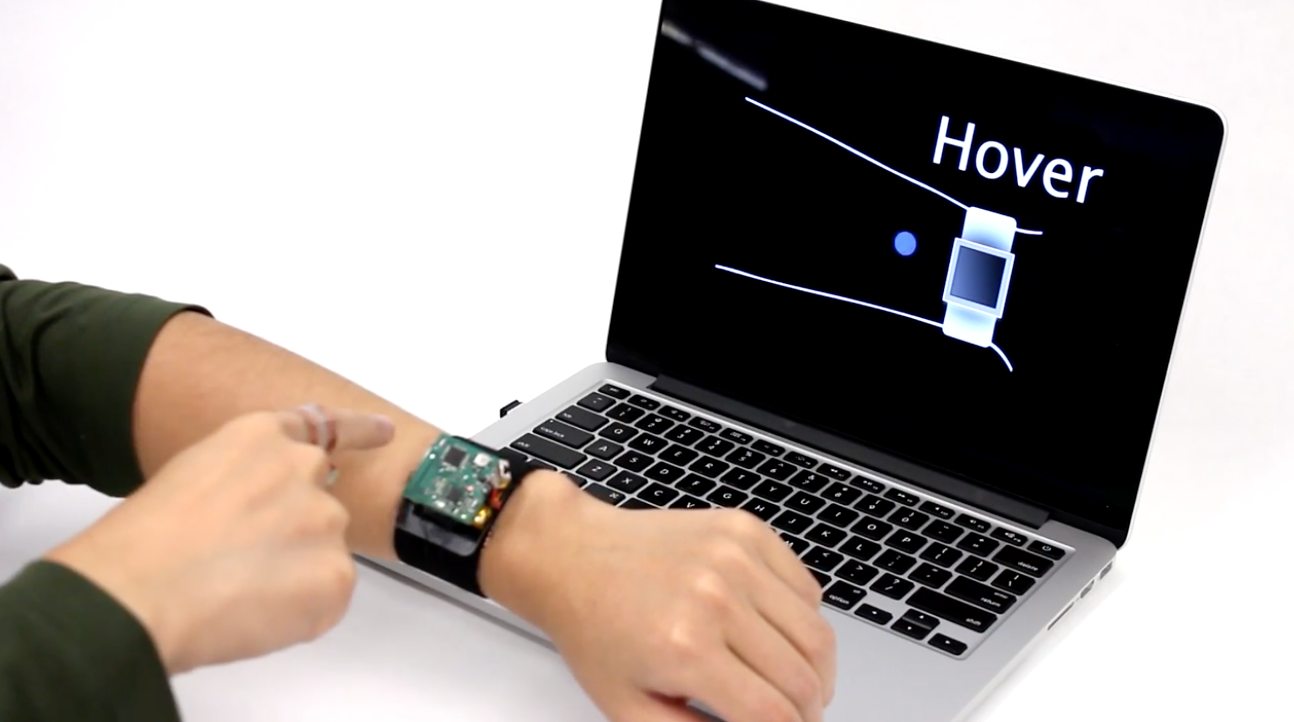
One of the biggest challenges with smartwatches is trying to navigate through apps on a relatively tiny screen. While smartphones and tablets have gotten bigger over the years, the gadgets we wear on our wrists need to stay small to avoid looking terribly unfashionable. Today a team at the Future Interfaces Group, a research lab within Carnegie Mellon University, released a look at a novel solution to this problem: making the skin on your arm and hand act like a touchscreen for your smartwatch.
The system uses a signal-emitting ring worn on the finger to communicate with a sensing band attached to the watch. When the finger wearing the ring touches the skin, a high-frequency electrical signal spreads across your arm. It uses the distance between the ring and four pairs of electrodes in the watchband to triangulate the position of your finger in 2D space.
via The Verge




